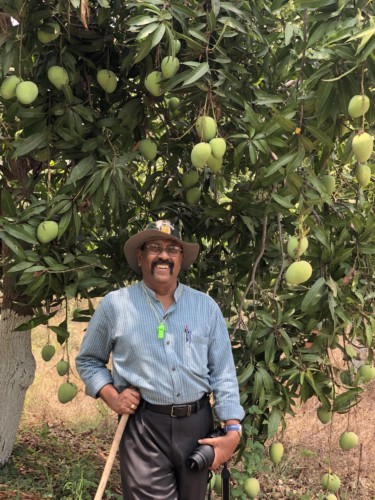Our family lived in Delhi for four decades. Prior to setting up my family in 1985, I was a student for my higher education in Delhi. Telugu festivals hardly mattered for students. If there were any cultural events at Andhra Pradesh Bhavan or Andhra Association, Telugu students thronged to these places and enjoyed the spirits of festivals including the tastes of traditional food items.
New responsibilities cropped up with the arrival of spouse into my life. As national and state-specific festivals started showing up, my wife would alert me with a list of items for celebrations. These lists were quite diverse and vary from festival to festival. Where do I find these in Delhi? My better-half crossed the state of Andhra Pradesh for the first time to the capital of India. Perplexed with the lists of items, my challenge was to find stores to buy these. I talked to my friends of southern states who have been living in Delhi for a long time. Result: I had a list of “south Indian stores” as they were called. “Rama stores” in Munirka was one such a popular shop that rescued thousands of south Indian families by making available full range of supplies for all festivals of southern states. This store equipped A-Z items of south Indians including regional magazines. It was a great relief. As we were living in Vasant Kunj, this store was close by and life went smoothly for over a decade.
A twist came in. We bought an apartment in Delhi’s sub-city called Dwarka in 2002 and shifted to west Delhi. It was not so well developed in terms of infrastructure and connectivity.
Then came the Ugadi – New Year for Telugu people. In spite of limitations in a new geographical area, we made plans to celebrate this festival grandly. The only item that was challenging for me was mango leaves for making festoons to decorate doors and a few leaves for pooja purpose. I used my network of friends again and came to know that there is one tree in an apartment compound a few kilometers away from our place. My spouse was impressed with my discovery started looking forward for these auspicious leaves to make Ugadi a complete festival! I drove to that place and requested the security guard at the gate to allow me in. I told the purpose of my visit and importance of leaves for that day as I did not have any friend to meet to make an entry into the compound. He told me that since morning on that day, many south Indians thronged to lone mango tree to pick up leaves. The guard put forward his helplessness by citing that the Management Committee of Resident Welfare Association will be angry to see more people coming in to denude the tree! I noticed a few people returning with smiles on their faces holding mango leaves in their hands. I repeated my request and assured the guard that I will take only a few leaves for pooja only. He was convinced with my innocent face and allowed me in with a warning to take a few leaves. I nodded my head obediently and ran towards the VIP tree of the day.
I reached home and kept the harvest on the table. After a quick glance at these leaves, my wife made a funny face and looked at me indignantly. I saw many question marks on her face! Worried with repercussions, I explained the challenge I faced in getting these leaves. Curiously I counted the leaves: They were 27. The first Ugadi in Dwarka was celebrated with the lowest number of mango leaves in our life till now.
I retired from my job, shifted from Delhi to our hometown Nirmal (Telangana State) in 2016. We both love farming and to fulfill this passion during the remaining phase of our lives, we bought a mango orchard. Believe it; we have 450 mango trees in our farm. Whenever I pick up branches, thick and sturdy leaves for festivals to decorate our home, those 27 hard-earned leaves in Delhi always come to my mind.
*









What a lovely write up and it rflects our attachment to Nature… Loved the crispy sort of writing style